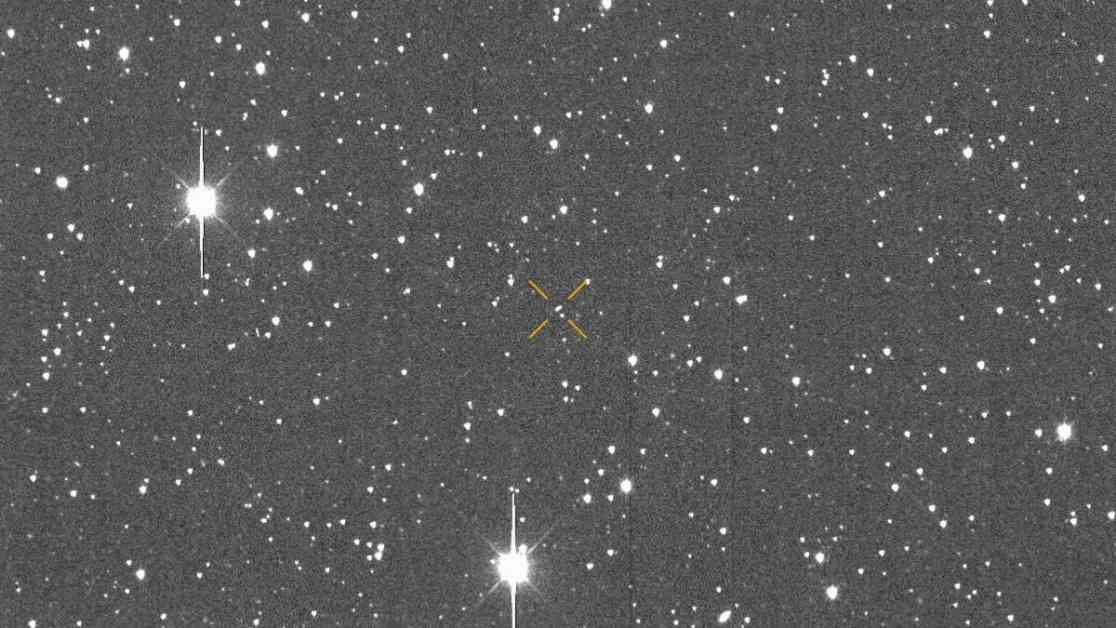Asteroid Impact Risk Assessment for 2032: A Closer Look at Impending Threats
In recent news, there has been a buzz surrounding an asteroid, 2024 YR4, that poses a potential threat to Earth in the year 2032. The initial discovery of the asteroid was made in Rio Hurtado, Chile, by a NASA-funded telescope back in 2024. Soon after, scientists calculated that there was a slim chance, just over 1%, that this asteroid could collide with Earth in December 2032. However, as the months passed, the trajectory and impact probability of 2024 YR4 underwent significant fluctuations, keeping experts and the public on their toes.
Astrologers revealed on Tuesday that the likelihood of 2024 YR4 hitting Earth had surged to about 3%, a surprising turn of events for a relatively small asteroid measuring between 130 to 300 feet in diameter. Yet, by Wednesday, the impact assessment plummeted to 1.5%. Despite these fluctuations, Davide Farnocchia, a navigation engineer at NASA’s Jet Propulsion Laboratory and the Center for Near Earth Object Studies, reassured the public that the impact probability remained low, urging people not to panic over the situation.
When questioned about the abrupt rise in impact risk, Farnocchia explained that such changes were not uncommon in the scientific realm. He emphasized that while the probability of impact could increase suddenly, it could just as quickly drop back down. The uncertainties stem from the fact that astronomers cannot precisely predict an asteroid’s future location but instead work within a range of possibilities. As observational data accumulates, astronomers can refine their predictions, narrowing down the potential impact zone until the risk is eliminated entirely.
As it stands, the current trajectory of 2024 YR4 veers away from Earth, following a nearly straight path. Astronomers are diligently tracking the asteroid’s movements, gathering data until it eventually disappears from view. They have until early April to finalize their assessments and determine whether there is a genuine threat of impact. Interested individuals can stay updated on astronomers’ progress by visiting the Sentry webpage for the latest information.
Where the Asteroid Might Strike
In the unlikely event that 2024 YR4’s trajectory intersects with Earth, the impact point is projected to fall within a defined “risk corridor.” This corridor spans across the eastern Pacific Ocean, northern South America, the Atlantic Ocean, the Arabian Sea, and South Asia, as outlined by the International Asteroid Warning Network. While the chances of a collision are slim, the potential consequences underscore the need for ongoing vigilance and preparedness.
Comparing Past and Present Threats
Astronomers draw parallels between 2024 YR4 and another notorious asteroid, 99942 Apophis, which first garnered attention in 2004. At the time of its discovery, Apophis posed a significant threat, with initial assessments suggesting a possible impact in 2029. The asteroid’s risk level reached a Torino Scale rating of 4, signifying a cause for concern among astronomers worldwide. However, further research and analysis led scientists to conclude that the likelihood of an impact was minimal, with a potential risk resurfacing in 2068.
In contrast, 2024 YR4 currently falls under a Torino 3 classification, a rarity reserved for asteroids larger than 65 feet with a 1% or higher probability of impact. Despite the uncertainties surrounding these celestial events, experts remain vigilant, continuously monitoring the situation to ensure the safety of our planet.
While the threat of an asteroid impact may seem daunting, history has shown that many smaller asteroids disintegrate upon entering Earth’s atmosphere, posing minimal risk to human life and property. Larger meteorites that survive the journey typically land in uninhabited areas, such as the ocean or open landscapes, further mitigating the potential damage they could cause. As we navigate the complexities of space exploration and cosmic threats, it is essential to approach these challenges with a sense of readiness and resilience.
In conclusion, the evolving nature of asteroid impact assessments serves as a reminder of the ever-changing dynamics of our universe. While the future trajectory of 2024 YR4 remains uncertain, the collective efforts of astronomers and researchers continue to shed light on the mysteries of our cosmos, offering valuable insights into the delicate dance between Earth and the celestial bodies that surround us. Stay tuned for further updates as we delve deeper into the realm of space exploration and discovery.




